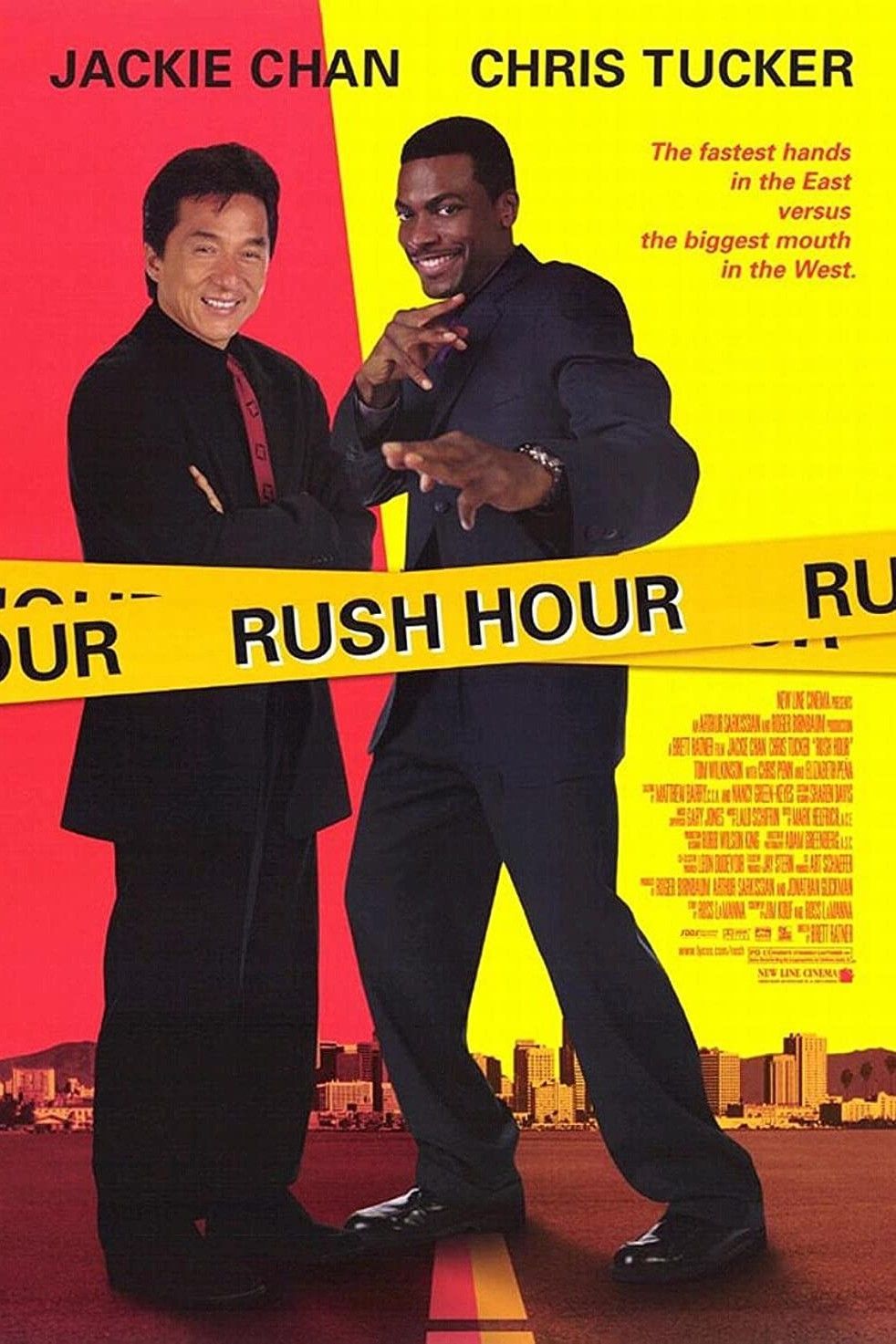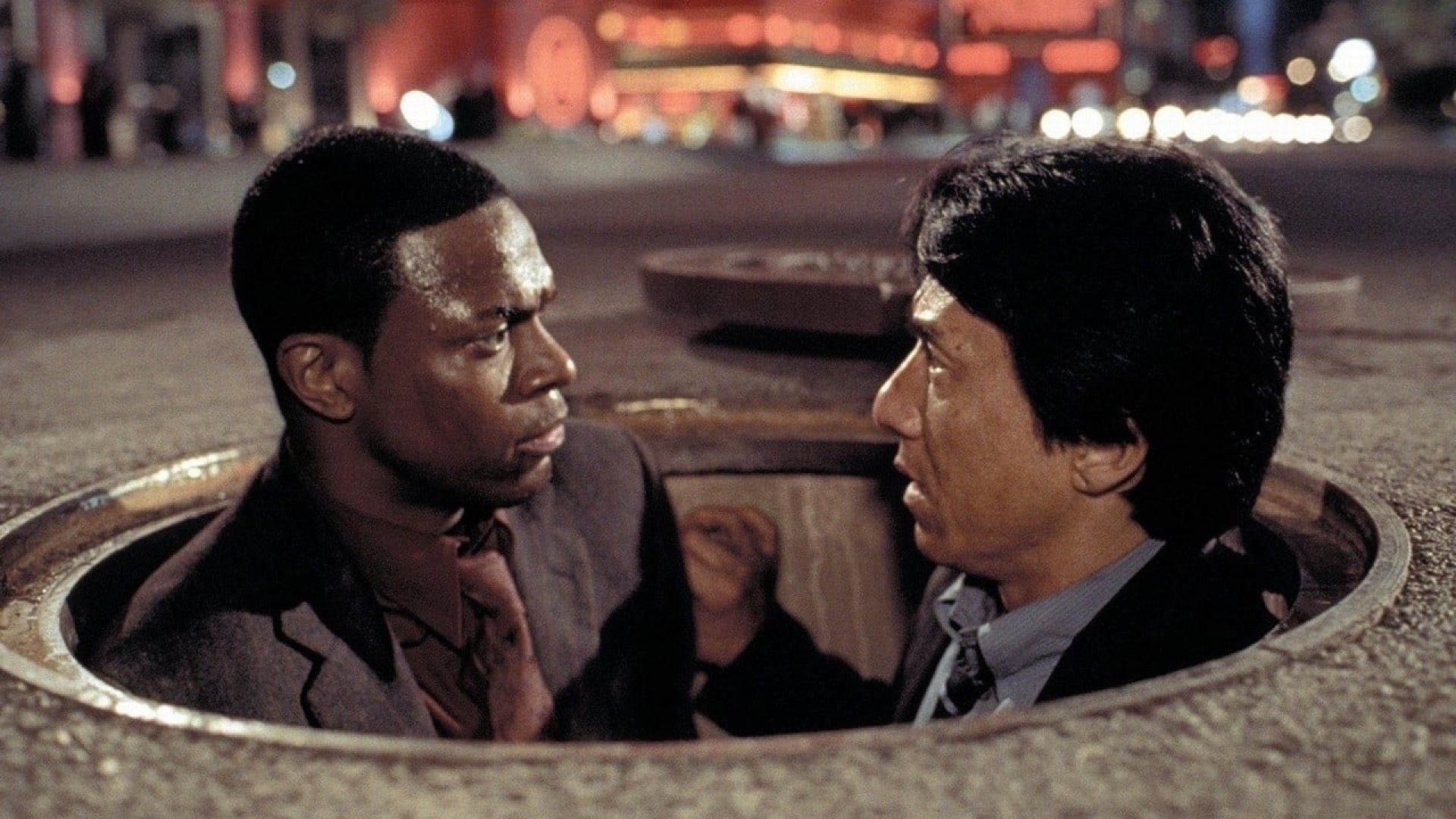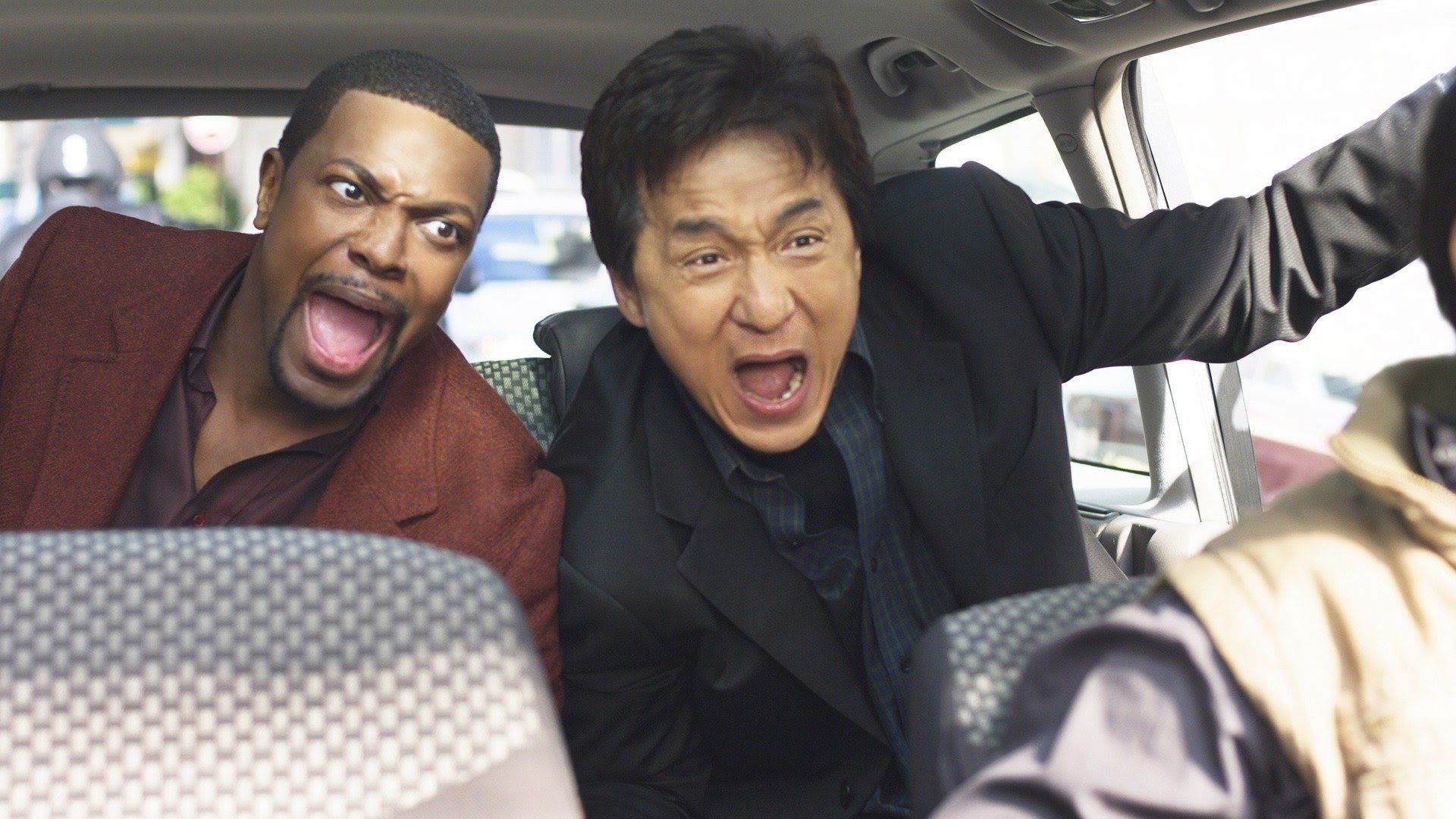The buddy cop genre seems to be a dying art form these days. Aside from franchise sequels like Bad Boys: Ride or Die and the upcoming Zootopia 2, buddy cop movies seem to be on the decline. We’ll never forget the great duos like Martin Riggs and Roger Murtaugh from Lethal Weapon, Morton Schmidt and Greg Jenko from 21 Jump Street, as well as Ben Barber and James Payton from Ride Along. There are other examples, but buddy cop franchises are top of mind for one particular reason. Oh, yeah, on August 1, Netflix added the sequels to 1998’s Rush Hour to its ever-growing library.
For nine years, moviegoers followed Jackie Chan’s Chief Inspector Lee and Chris Tucker’s Detective James Carter as they not only clashed in terms of culture but also sought to take down crime lords within the Chinese triad. Interestingly enough, while audiences generally favored all three, critical interest seemed to massively decline with each entry (the latest being ripped apart). Did Rush Hour really get worse as time went on? Let’s take a look for ourselves.
The Original ‘Rush Hour’ Is Close To Being Perfect
Released just two months after Lethal Weapon 4, director Brett Ratner’s first outing with Inspector Lee and Detective Carter was a critical and commercial hit. The former is dedicated to his job and handles himself with respect. While talented as well, the latter can be obnoxious, and he pretty much incites chaos wherever he goes. To avoid creating an international incident, Carter is assigned to distract Lee while the FBI tries to rescue the kidnapped daughter of a Chinese diplomat. Right away, Rush Hour has great pacing. The opening scene shows Lee in action, thwarting the robbery of ancient artifacts in Hong Kong. Soon enough, we also come upon Carter fumbling his way through an undercover operation in a diner parking lot. This ongoing clash in personalities only improves as the film progresses, with sincere moments of bonding between the agents from different cultures. Tucker’s clever comebacks are on point, and Chan’s martial arts displays are great to watch.
It’s no surprise that both critics and audiences enjoy the original — it’s a great mix of slapstick and seriousness. Fortunately, this tone generally remains in the 2001 sequel. Rush Hour 2 puts us right at the end of the first movie — Carter and Lee are attempting to vacation in Hong Kong when a bombing at the U.S. Embassy pulls Lee back into the fold. While the story does provide some balance between the laughs and weighty storytelling (for example, Lee’s father was partners with the main antagonist and the impact of Carter’s supposed death), the comedy in turn becomes more absurd (and well, cheap) than before.
‘Rush Hour 2’ Still Holds Some Charm
The two cops run through the streets naked, Lee becomes more like Carter when it comes to chasing women, and a lot of the jokes rely on racial undertones (more than in the first movie, anyway). While that last part would not cut it in theaters today, you have to remember that it was made over 20 years ago, and the chemistry between the two actors was still at an all-time high. The casino and penthouse settings during the climax help make the fights mean something. While it doesn’t have the sincerity of the first, the best thing to say about Rush Hour 2 is that the final box office numbers beat both the original and the third. If moviegoers accept this movie, you should give it a chance too. On the other hand, you don’t have to be so merciful with the final entry.
Coming out five years after Lee and Carter’s run-in with a money-laundering scheme, Rush Hour 3 attempts to fall back to the franchise roots by bringing back Ambassador Solon Han and his daughter, Soo-Yung Han, who played vital parts in the original. Along with them, award-winning Japanese actor Hiroyuki Sanada plays Kenji, Lee’s foster brother and primary antagonist. All these ingredients sound promising on paper, but the film’s overreliance on sloppy humor and recycled gags doesn’t land.
‘Rush Hour 3’ Is Too Sloppy With Its Humor
Within the first 20 minutes, Lee sexualizes two women whom he arrests. A comedic routine from the first movie is repeated almost line for line, and the duo clumsily fight a kung-fu giant who just so happens to be randomly waiting in a closet. It only gets worse from here. A nun turns ghetto in the blink of an eye, and the buddy-cop duo spend an entire sequence ogling a woman from afar. These gags end up watering down an otherwise promising story. Sanada pushes Chan to be the best he can be in terms of acting, and even though the final battle is stretched out, the fight choreography is better than the second. On the whole, Rush Hour 3 is not the 17% score that the critics make it out to be on Rotten Tomatoes (oh boy), but the latest entry does make the mistake of thinking the worst parts of the second film were actually the best.
In December 2022, at the Red Sea International Film Festival, Jackie Chan himself said that Rush Hour 4 is in the works. It’s been three years since then, though, and little progress has been made on the project. We can only hope that the criticism of the 2007 entry has been taken to heart and the over-the-top gag humor that muddled the story has been toned down. Maybe replace that with explosions? Whatever the case turns out to be, Rush Hour 2 and 3 are hoping to helpfully revive the buddy cop genre since they are now available to stream on Netflix.

Rush Hour
- Release Date
-
September 18, 1998
- Runtime
-
98 minutes
Source link



















Add Comment